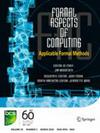Review of Understanding Programming Languages
IF 1.4
4区 计算机科学
Q3 COMPUTER SCIENCE, SOFTWARE ENGINEERING
引用次数: 0
Abstract
First, a disclosure: I had every intention of buying this book before being offered the chance to review it. This was due mainly to the fact that my introduction to formal methods was via a previous book by the same author [1]! This book shows how formal specifications and semantics can enhance the quality of program and specification language development by clarifying key concepts early, and providing a clear basis for assessing the correctness of their implementations. The material in this book has also been used in final-year undergraduate teaching for a decade. This book is much more than a textbook, however. It mixes complete technical examples with commentary and copious historical notes about the development of programming languages, and their on/off relationship with formal techniques. This commentary makes the book a very natural and fluid read, and worth dipping into, as well as reading in order. Another key feature of the book is the introduction and discussion of various “Challenges” and “Language Issues.” There are 8 of the former, and 46 of the latter. These help to distill out key aspects and concerns. The book starts by showing how the ideas develop for “typical” (i.e., imperative) programming languages. This starts by using VDM notation to specify a structured operational semantics for a simple untyped imperative language. It then adds more features such as types, and code blocks. A key theme of this book is how the very definition of the semantic objects determines what the (dynamic) semantic possibilities will be. For example, dealing with memory locations, the choice to make them uninterpreted tokens rather than numbers, means that address arithmetic is ruled out. This is a significant semantic modelling choice. The remainder of the book starts to look at more complex language features, such as object orientation, records, pointers, functions/procedures, and concurrency leading to a semantics for a concurrent object-oriented language. Chapter 8 looks at shared variable concurrency and all its challenges. It shows how small-step operation semantics is able to model the non-deterministic interleaving behaviour. It then turns its attention to proof techniques, ranging from Rely/Guarantee, to Concurrent Separation Logic, and very recent mixings of the two. The author also makes the point that any process algebra that can model state change has to deal with the issue of interference: this includes CCS, CSP, and many others. Chapter 9 builds on Chapter 8 to combine concurrency with OO, in the form of the COOL language. As already mentioned above, just describing the semantic objects suffices to define the理解程序设计语言的回顾
首先,一个披露:在有机会复习这本书之前,我完全想买这本书。这主要是因为我对正式方法的介绍是通过同一作者的前一本书[1]!本书展示了形式化规范和语义如何通过尽早澄清关键概念,并为评估其实现的正确性提供明确的基础,来提高程序和规范语言开发的质量。这本书中的材料也被用于本科最后一年的教学已有十年了。然而,这本书远不止是一本教科书。它将完整的技术示例与关于编程语言的发展及其与形式技术的开/关关系的评论和丰富的历史笔记混合在一起。这篇评论使这本书读起来非常自然流畅,值得一读,也值得按顺序阅读。这本书的另一个主要特点是介绍和讨论了各种“挑战”和“语言问题”。前者有8个,后者有46个。这些有助于提炼出关键方面和关注点。本书首先展示了“典型”(即命令式)编程语言的思想是如何发展的。首先,使用VDM表示法为简单的非类型命令式语言指定结构化的操作语义。然后,它添加了更多的功能,如类型和代码块。这本书的一个关键主题是,语义对象的定义如何决定(动态)语义的可能性。例如,处理内存位置,选择使其成为不可理解的标记而不是数字,意味着地址算术被排除在外。这是一个重要的语义建模选择。本书的其余部分开始研究更复杂的语言特性,如面向对象、记录、指针、函数/过程和并发性,从而形成并发面向对象语言的语义。第8章介绍了共享变量并发及其所有挑战。它展示了小步操作语义如何能够对非确定性交织行为进行建模。然后,它将注意力转向证明技术,从Rely/Guarantee到并发分离逻辑,以及这两者最近的混合。作者还指出,任何能够对状态变化建模的过程代数都必须处理干扰问题:这包括CCS、CSP和许多其他问题。第9章建立在第8章的基础上,以COOL语言的形式将并发性与OO相结合。如上所述,仅描述语义对象就足以定义
本文章由计算机程序翻译,如有差异,请以英文原文为准。
求助全文
约1分钟内获得全文
求助全文
来源期刊

Formal Aspects of Computing
工程技术-计算机:软件工程
CiteScore
3.30
自引率
0.00%
发文量
17
审稿时长
>12 weeks
期刊介绍:
This journal aims to publish contributions at the junction of theory and practice. The objective is to disseminate applicable research. Thus new theoretical contributions are welcome where they are motivated by potential application; applications of existing formalisms are of interest if they show something novel about the approach or application.
In particular, the scope of Formal Aspects of Computing includes:
well-founded notations for the description of systems;
verifiable design methods;
elucidation of fundamental computational concepts;
approaches to fault-tolerant design;
theorem-proving support;
state-exploration tools;
formal underpinning of widely used notations and methods;
formal approaches to requirements analysis.
 求助内容:
求助内容: 应助结果提醒方式:
应助结果提醒方式:


